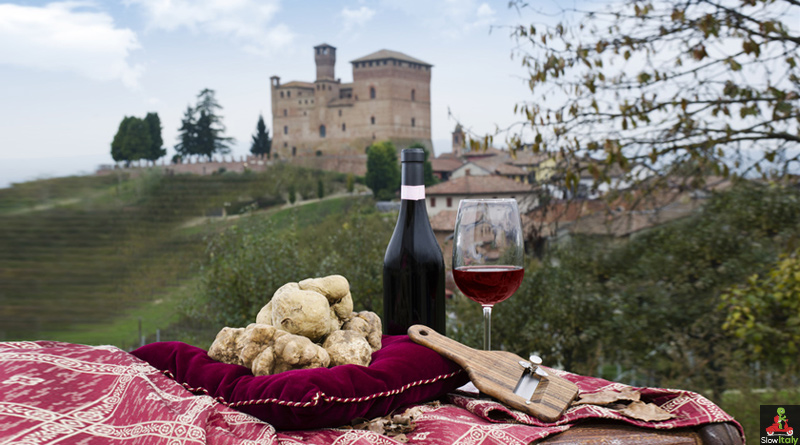
1. Introduction
Former “capital region” of Italy, Piedmont witnessed some of the major developments in history. The region also offers picture-perfect landscapes, enchanting villages, beautiful castles, top of the art wineries and world renowned local food specialties.
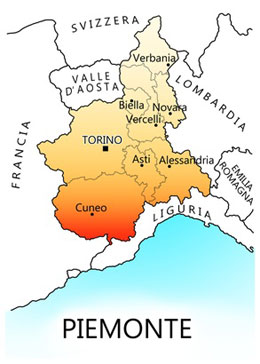
Piedmont is the second largest of Italy’s 20 regions, after Sicily. It borders with France, Switzerland and the regions of Aosta Valley, Lombardy, Liguria and to a small extent also Emilia Romagna.
The name Piedmont stems from medieval Latin Pedemontium or Pedemontis, i. e. ad pedem montium, meaning “at the foot of the mountains”. Indeed, the region is surrounded on three sides by the Alps, including Monviso (Mont Vis), where the Po rises, and Monte Rosa.
The region has a population of about 4.4 million. The capital of Piedmont is Turin, once the first capital of the Kingdom of Italy.
The main local language is Piedmontese. Occitan and Franco-Provençal are also spoken by minorities in the Occitan Valleys and in the alpine heights of the Province of Turin respectively.
2. Piedmont in 10 photos
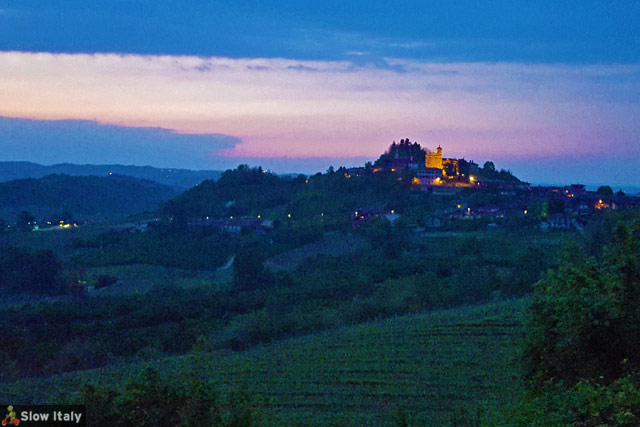
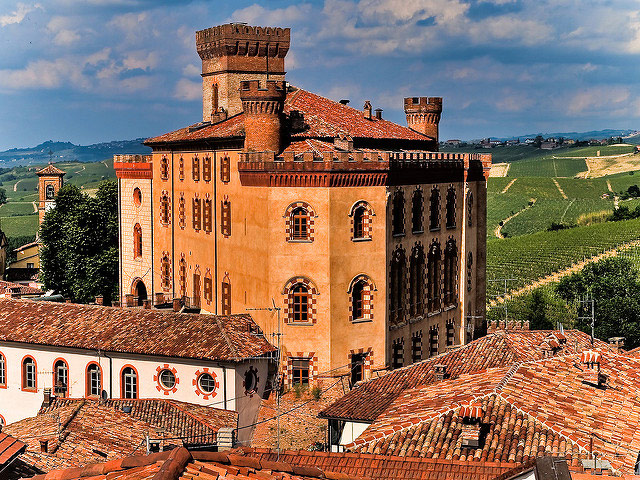
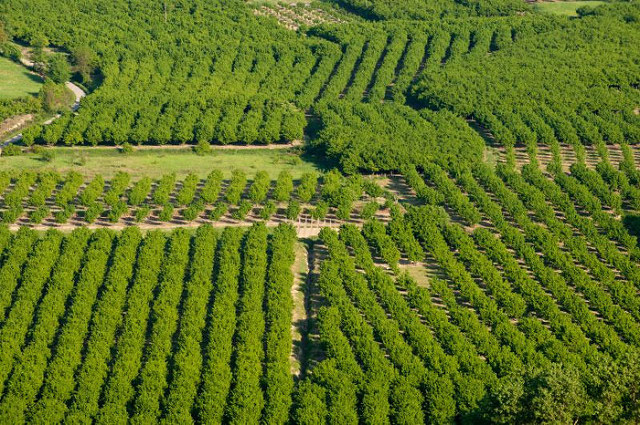
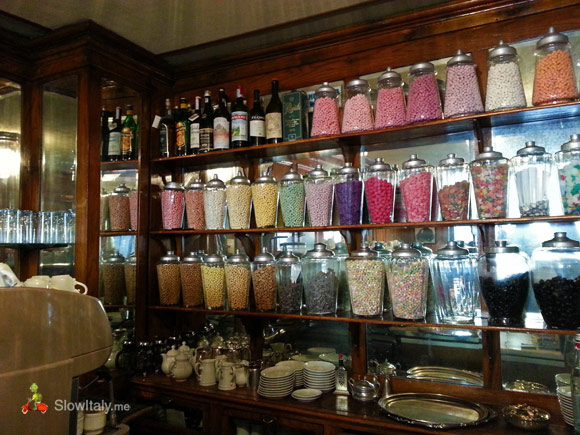
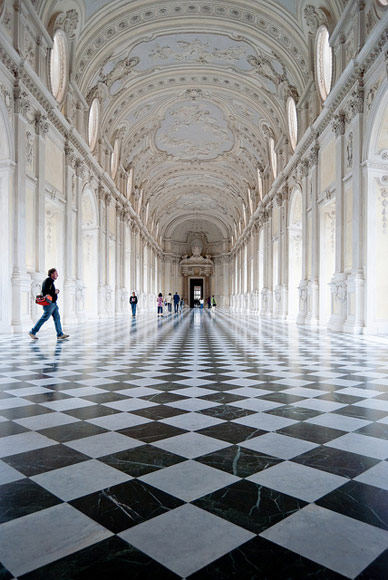
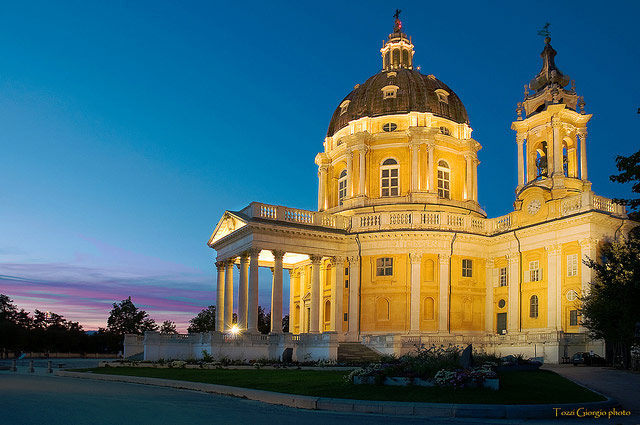
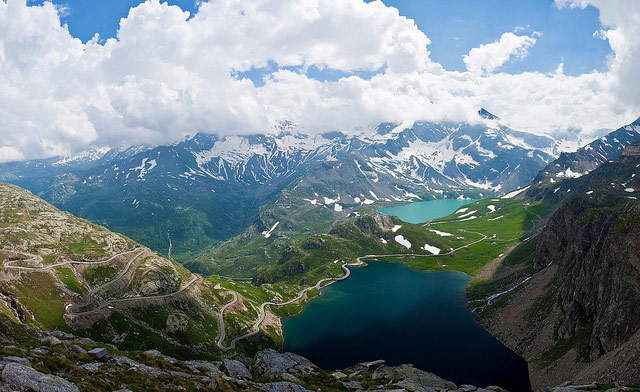
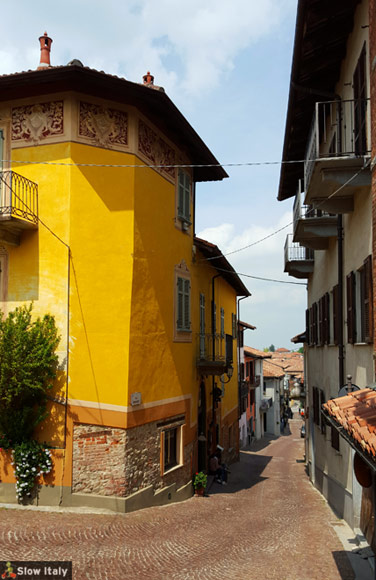
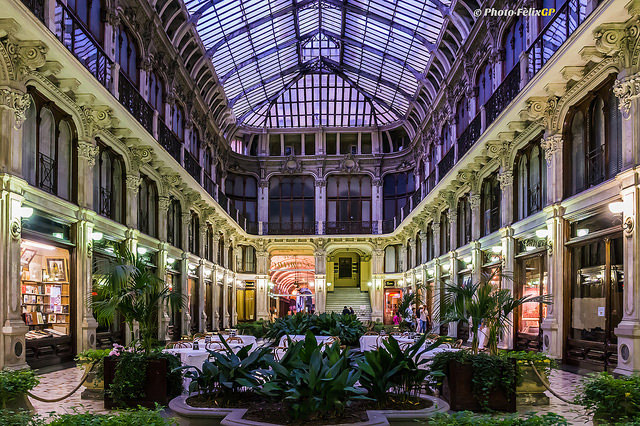
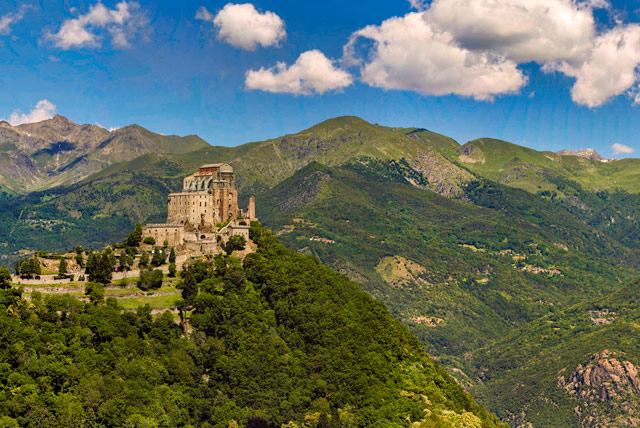
3. Planning your trip to Piedmont
Top Cities to visit in Piedmont
(in alphabetical order)
Alba, the capital of the white truffle and capital of the Langhe
Alessandria
Asti
Biella
Bra, the capital of the Roero
Cuneo
Novara
Turin, the capital of the region. See: 10 most famous cities of Italy
Vercelli
What to visit in Piedmont
Langhe, Roero and Monferrato
The triangle between Turin, Asti, Alessandria and Cuneo includes the Langhe, Roero and Monferrato, famous for their jaw-dropping landscapes, enchanting castles and vineyards. Each of them are a destination par excellence for gourmets and wine connoisseurs.
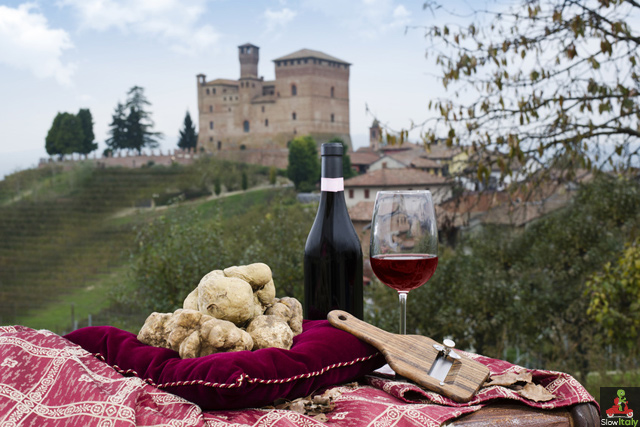
The Langhe (Langa from old dialect Mons Langa et Bassa Langa), the hilly area to the south and east of the river Tanaro in the province of Cuneo, is famous for its wines (Barolo, Nebbiolo, Barbaresco and Dolcetto), cheeses, and truffles, particularly the white truffles of Alba.
Barolo: the places of origin of the grapes suitable to the making of Barolo DOCG (Protected Designation of Origin) include 11 townships: Barolo, Castiglione Falletto, Serralunga d’Alba and portions of the townships of Cherasco, Diano d’Alba, Grinzane Cavour, La Morra, Monforte d’Alba, Novello, Roddi and Verduno. The countryside as it was in the first half of the 20th century features prominently in the writings of Beppe Fenoglio and Cesare Pavese, who was born in Santo Stefano Belbo. Other great writers from the area include Davide Lajolo and Giovanni Arpino.
The Roero area is characterized by its extensive chestnut woods, terraced vineyards, peach-tree plantations and strawberry fields. The main towns are Bra and Canale. The area is also famous for its 8 castles, among which Grinzane Cavour and Monticello d’Alba. The most famous grape variety of the Roero area is the Nebbiolo, but the the area is also increasingly known for its white grape varieties Arneis and Favorita.
The Monferrato area consists of the Basso Monferrato, between Asti and Casale Monferrato which produces Barbera, Grignolino and Moscato, and the Alto Monferrato known for its white Cortese, red Dolcetto and sweet sparkling red Brachetto.
Historic Villages of Piemonte
Located throughout Piemonte’s six provinces are Candelo, an ancient village a few kilometers from Biella, Chianale and Ostana, typical of the Occitan culture, and Neive, the land of the Barbaresco wine and white truffle, all three located in the province of Cuneo. Along the road leading to the region of Liguria is Garessio, the pearl of the Maritime Alps, not far from the Italian and French Riviera and near Piemonte’s Monregalese and Langa districts.
Heading to the lake in the province of Novara, is one of the most evocative places in Piemonte: Orta San Giulio. Beloved by writers and poets, Orta is a small town characterized by very picturesque narrow streets.
Macugnaga is located in the province of Verbano Cusio Ossola. Not very different, but located in a very different part of Piemonte, in the heart of Val Chisone protected by the Albergian, Orsiera and Rocciavré mountains is the village of Usseaux. A rare example of the Medieval era in the Langa area of the province of Asti is Mombaldone, once under the dominion of the Lombards.
Piemonte’s Islands:
The Isole Borromee (Borromean Islands) are a group of three small islands and two islets in the Italian part of Lago Maggiore. They were given their names after the 14th century feudal lords that acquired the islands, and still own some of them to this day. The islands include: Isola Madre, Isola Bella, Isola dei Pescatori, Isolino di San Giovanni and the tiny rock Malghera.
Piemonte’s Lakes:
The second largest lake of Italy, Lake Maggiore, shares its shoreline between the Piedmont and Lombardy regions, and Switzerland. The beautiful scenery around Lago Maggiore is dominated by the Alps and the Monte Rosa massif offering beautiful views over the lake.
At about 28km to the west of Lake Maggiore lies Lake Orta, with its mesmerizing, little island San Giulio and the lake side village of Orta San Giulio.
The glacial Lake Viverone is located in the Serra Moraine of Ivrea, in the aera between Biella, Vercelli and Ivrea. It is here that the famous white Erbaluce wine is produced.
There is also the maar lakes of Avigliana, Lago Grande and Lago Piccolo, located in the eponymous Natural Park at the foot of Monte Pirchiarano, at the entrance of the Susa valley. At the top of the Monte Pirchiarano is the Sacra di San Michele dating back to the 11th century.
National Parks
Piedmont is one of the leading regions in nature conservation in Italy. The Gran Paradiso National Park and Val Grande National Park as well as it 40 regional parks and nature reserves offer an incredible biodiversity in fauna and flora.
Thermal Baths
The region is also famous for its thermal baths and wellness centers, many of which are located in the Cuneo province. among which Bagni di Vinadio (known for the therapeutic qualities of its sulfur waters), Garessio (S. Bernardo Waters), Terme di Lurisia, and Terme di Valdieri. There are also Acqui Terme (spa treatments with muds), Agliano Terme, Bognanco (Bognanco waters) in the provinces of Alessandria, Asti and Verbano, respectively.
Other interesting sights
Sacra di San Michele
Superga Basilica
Palace of Venaria
Stupinigi Palazzina di Caccia (Stupinigi hunting palace)
Sacri Monti
When to visit Piedmont
Depending on what your main focus is, you can visit Piedmont almost any time of the year. October and November are the best months if you are interested in white truffles. For the wine festival Vinum, the end of April is recommended, while the magnificent landscape is at its best in April, May and June and September.
4. What to bring from Piedmont
Red and white wines, cookies, chocolate products (the famous gianduja, the hazelnut and chocolate paste at the origin of Nutella), ceramics (from Castellamonte), silver crafts (from Alessandria)
5. Useful info
Climate
Being the second larges province, Piedmont has a very diverse climate range. While the North has a continental climate, the South is only 30 miles from the Ligurian coast, the so-called Riviera, with weather influenced by the warm Mediterranean sea.
Provinces
The Piedmont region counts 8 provinces:
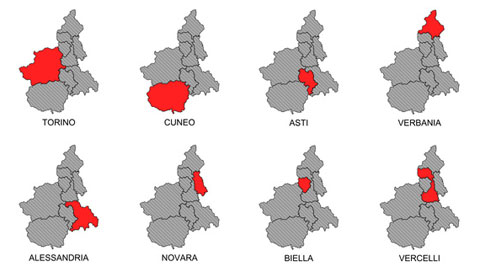
6. Festivals and Events in Piedmont
Vinum, Alba
Annual fair for wines from the Langhe, Roero and Monferrato, taking place at the end of April.
International Alba White Truffle Fair, Alba
Annually in October and November
Palio of Asti,
Third Sunday in September
7. Famous people from Piedmont
Primo Levi, Umberto Eco, Victor Emmanuel II, Rita Levi-Montalcini, Carla Bruni, Flavio Briatore are all originary from the Piedmont region.
8. Related articles about Piedmont
10 Reasons why Turin should be on your Italy bucket list
White truffle vade mecum: busting 10 myths about Alba truffles
Turin’s historic cafés: where insurrection rhymes with literature and chocolate
Sacra di San Michele: a Mysterious Monastery high up in the Mountains
A relaxing lakeside weekend in Orta San Giulio, Lake Orta
Superga : a basilica, a tragedy and the birth of a legend
Cookies, Candies and other confections from Piedmont
Singular, multicolored vineyard chapel in La Morra
Photo credits (from top to bottom): Barolo by Luca Boldrini; Chestnut woods by Jacqueline Poggi; Venaria Reale by Vince42; Superga by Giorgio Tozzi; Gran Paradiso National Park by Soumei Baba; Galleria Subalpina by Felix Gonzalez; Sacra di San Michele by BillH-GSACC.


Pingback:periodic table of elements with names and symbols
Pingback:sell junk car no title
Pingback:how to get applications
Pingback:convert webm to mp4 windows 10
Pingback:automatic screw tightening machine
Pingback:dav to mp4 converter online free
Pingback:tech times logo
Pingback:environmental test chamber manufacturers
Pingback:evano oruvan song download
Pingback:swimming pool services near me
Pingback:demande de visa france
Pingback:fastener machine manufacturers china
Pingback:wayfarer sunglasses
Pingback:automatic screw feeder China
Pingback:automatic screw feeder machine
Pingback:screw machine definition
Pingback:get official documents
Pingback:robotic screwdriving systems
Pingback:all new movie
Pingback:nut bolt tightening machine electric
Pingback:logiciel de création de site web gratuit
Pingback:custom made lithium ion battery
Pingback:site de rencontre madagascar
Pingback:open file manager
Pingback:love frame photo editor download
Pingback:best cbd oil
Pingback:Golf cart battery
Pingback:private label organic cosmetics manufacturer
Pingback:bbc learning english
Pingback:today news in hindi
Pingback:low moq private label skincare
Pingback:zemits hydroluxx machine
Pingback:instragram decoration
Pingback:private label clothing manufacturers in China
Pingback:today news paper
Pingback:organic private label skin care no minimum
Pingback:private label organic cosmetics manufacturers in china
Pingback:screw tighter machine price
Pingback:robotic screwdriving systems
Pingback:bloom cartridge recall
Pingback:newtown casino free credit
Pingback:hydraulic car lift olx
Pingback:online tutoring jobs
Pingback:floor marking tape india
Pingback:nembutal india
Pingback:harbor construction
Pingback:live law
Pingback:football game predication
Pingback:Anonymous
Pingback:olansi a12
Pingback:papa birthday cake design
Pingback:judi slot online terbaru
Pingback:cocomo model tutorialspoint
Pingback:4g network jammer
Pingback:ce certification in United Kingdom
Pingback:Visit This Website
Pingback:mixed money worksheets
Pingback:mixed denomination bill counter amazon
Pingback:justin's lighthouse
Pingback:china plastic injection mold manufacturer
Pingback:olansi air purifier review
Pingback:Agen Sbobet Terpercaya
Pingback:ziggo internet netherlands
Pingback:plastic injection molding company
Pingback:online slots real money no deposit
Pingback:china mold manufacturer
Pingback:funding talent monthly fee
Pingback:Read It
Pingback:dachshund price
Pingback:bulk sms marketing
Pingback:online tools store india
Pingback:cheap mobile phones outright
Pingback:lavagame66
Pingback:Medical Health
Pingback:Click Here
Pingback:big chief extracts delta 8
Pingback:wedding gifts for couple
Pingback:traditional waist beads
Pingback:best professional carpet cleaning companies
Pingback:royal bet88
Pingback:european kitchen cabinets manufacturers
Pingback:robotic vacuum cleaner wet and dry
Pingback:trinity christian counseling center
Pingback:brent price
Pingback:honey the ordinary
Pingback:Visit Here
Pingback:largest air purifier manufacturers
Pingback:top air filter manufacturers
Pingback:glock 17
Pingback:Watch movies online
Pingback:olansi water purifier
Pingback:what company makes the best air purifier
Pingback:togel singapore 2021
Pingback:free sleep study near me
Pingback:sarasota school of architecture homes for sale
Pingback:watch hollywood movies online free streaming
Pingback:cnc wood router
Pingback:sell car online valuation
Pingback:okinawa flat belly tonic ingredients
Pingback:laser engraving metal
Pingback:land rover mobile bar
Pingback:zynga poker online
Pingback:dominoqq online
Pingback:what are moon rocks urban dictionary
Pingback:whatsapp dewagg
Pingback:pure car air purifier 3 in-1
Pingback:best car offers 2020
Pingback:how to create website for free
Pingback:dewafortune slot
Pingback:hypochlorous acid generator price
Pingback:cuckoo disinfectant solution generator price in india
Pingback:best online gambling sites usa
Pingback:free slots to play for fun
Pingback:car wrap vancouver cost
Pingback:judi bet
Pingback:dwlive88 register
Pingback:big chief extracts code
Pingback:things needed to start a cleaning business
Pingback:free football streaming apps
Pingback:sbotop logo
Pingback:china air purifier tower working
Pingback:weathertech garage floor mats
Pingback:best paint for home outside
Pingback:what does hand composition in printing mean?
Pingback:inspirational love quotes
Pingback:kente cloth meaning of symbols
Pingback:undergraduate essay writing service
Pingback:4d result today
Pingback:the king maker full movie
Pingback:free online casino games win real money no deposit
Pingback:free games for kids
Pingback:new company name suggestions free
Pingback:critical race theory in education pdf
Pingback:sbobet games
Pingback:desktop application development
Pingback:afyon plant
Pingback:sanitizer fogging machine malaysia
Pingback:best desktop air purifier 2021
Pingback:curved scissors dog
Pingback:click
Pingback:homework help online
Pingback:dominoqq pkv
Pingback:homework help online free
Pingback:free personality test
Pingback:joker888 login
Pingback:maxbet kladionica
Pingback:legal online gambling sites
Pingback:tom brady salary
Pingback:Sober Living Homes are alcohol
Pingback:husband and wife law team
Pingback:uk online casinos list
Pingback:strategic planning is
Pingback:sodium hypochlorite generator
Pingback:qq poker online terpercaya
Pingback:heating and cooling kansas city northland
Pingback:168 grain 7mm rem mag ammo
Pingback:sbobet88 indonesia
Pingback:download new apps
Pingback:social media management tools free
Pingback:iq hvac
Pingback:names of coffins
Pingback:buy cars with bitcoin usa
Pingback:customized keychain near me
Pingback:현금홀덤사이트
Pingback:legal online gambling sites
Pingback:herniated disc in neck surgery
Pingback:emergency dentist chattanooga
Pingback:wireless cctv camera installation guide pdf
Pingback:kent ro hot and cold
Pingback:and reduce tax bill
Pingback:offshore company registration in usa
Pingback:website design
Pingback:indian history questions and answers pdf
Pingback:pg slot สมัคร
Pingback:pg slot สมัคร
Pingback:paito hk siang
Pingback:top architecture firms nyc
Pingback:300 blackout 100 round drum for sale
Pingback:ez baccarat online
Pingback:face yoga benefits
Pingback:online casino betting sites
Pingback:sports betting sites
Pingback:buy wholesale pet products from china
Pingback:bitboy crypto wife
Pingback:online gambling sites usa
Pingback:gusto reviews reddit
Pingback:fabricant accessoires animaux
Pingback:pet product manufacturers in india
Pingback:tierfutter großhandel
Pingback:애견용품 도매사이트
Pingback:myntra sale womens kurti with palazzo
Pingback:boba for dogs recipe
Pingback:jio customer care number
Pingback:toto tribe upsc
Pingback:uk tech news twitter
Pingback:exante crypto
Pingback:indian celebrity news
Pingback:coastal plains of india class 9
Pingback:pet accessories manufacturers in india
Pingback:healthcare rankings by country 2020
Pingback:how to make chocolate bouquet
Pingback:samsung inverter ac light blinking
Pingback:15 gram gold necklace designs with price
Pingback:win real money online casino for free
Pingback:i have a business idea who do i speak to
Pingback:alberta tax
Pingback:joker login
Pingback:riyadh express news
Pingback:ganhar seguidores grátis
Pingback:poker online real money
Pingback:student defense lawyer near me
Pingback:pam's florist
Pingback:2022 好 去處
Pingback:legal news today
Pingback:exipure results reviews
Pingback:代写价格
Pingback:prince2 foundation
Pingback:top hr executive search firms near nayagarh, odish
Pingback:is binary options trading safe
Pingback:เว็บพนันบอล ดีที่สุด 2021 pantip
Pingback:suadero taco meaning
Pingback:100 rs t-shirts online
Pingback:berita terkini 2021 hari ini
Pingback:CCTV Liverpool
Pingback:futbol24 livescore
Pingback:Top Web Design Companies in UAE
Pingback:cares act employee retention creditemployee retention tax credit updatesirs employee retention credit faq
Pingback:estate lawyers brisbane northside
Pingback:สล็อตเว็บตรงไม่ผ่านเอเย่นต์ ล่าสุด
Pingback:qqmegawin77
Pingback:solar panels calculation
Pingback:Best Passive Income
Pingback:7naga toto loginpt togel
Pingback:joystick ps4
Pingback:zapier vs make
Pingback:vacuum double glazing
Pingback:Login MPO777
Pingback:adt upgrade for existing customers
Pingback:live rtp slot
Pingback:slot machine online
Pingback:standard deduction 2021
Pingback:free slot games to download
Pingback:sbobet88 asia
Pingback:hot and cold water purifier for office
Pingback:ghana infrastructure problems
Pingback:viva88 net
Pingback:jewelry rfid tags
Pingback:ihackedit games
Pingback:piece of cake moving
Pingback:imei unlock check
Pingback:giá thuê studio chụp ảnh hà nội
Pingback:how to get qts in uk
Pingback:12v battery monitor bluetooth
Pingback:industrial boiler manufacturers in india
Pingback:해외선물 뜻
Pingback:tại vn88
Pingback:rtp1 online directo gratis, tvtuga
Pingback:low-cost franchise opportunities
Pingback:what is the strongest glue for metal to metal
Pingback:polka dot official
Pingback:top 10 injection molding companies in world
Pingback:slot gacor 2023
Pingback:top 10 injection molding companies in world
Pingback:kepala sekolah smk 1 takengon
Pingback:Link posjitu app
Pingback:Star bet138 bonus